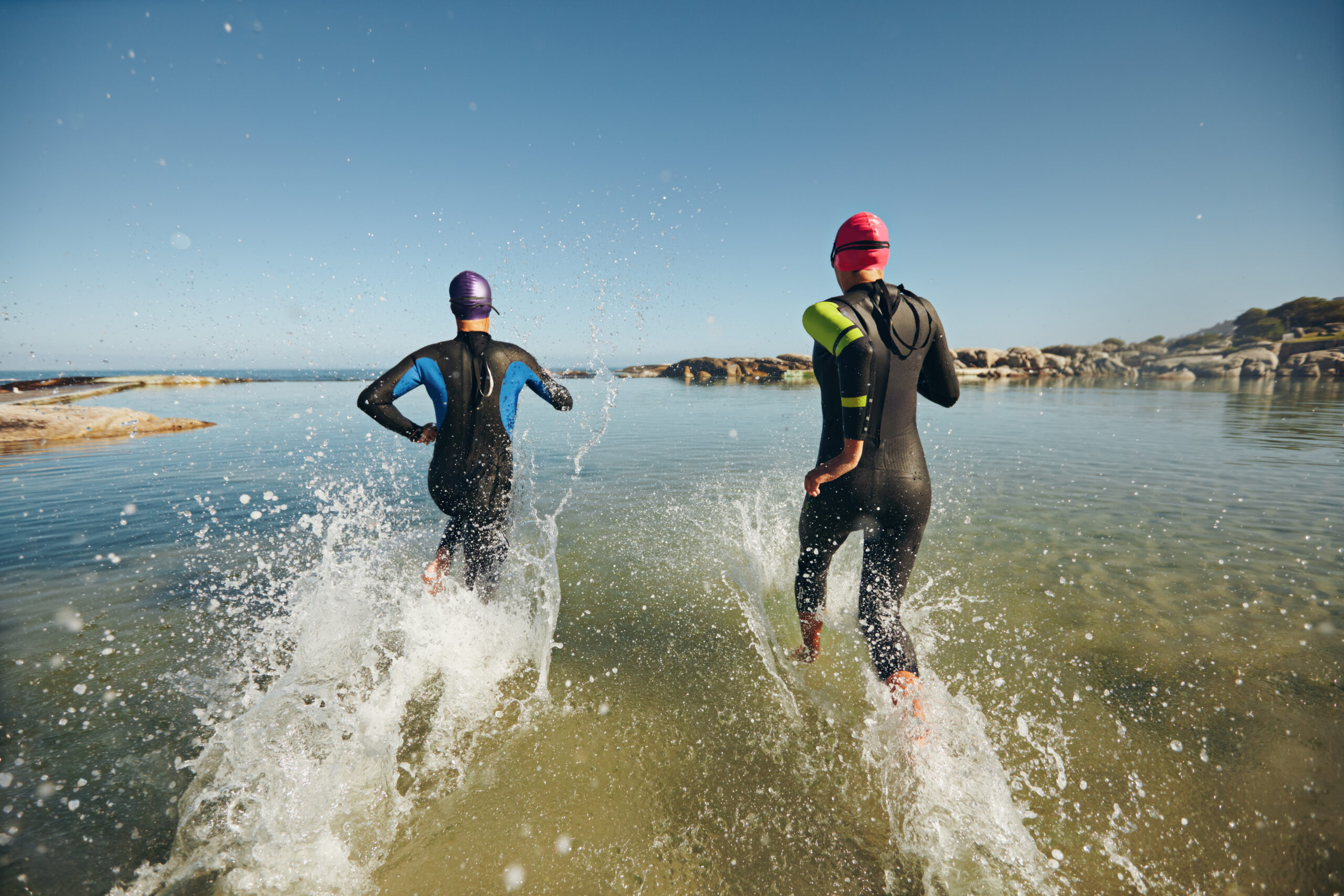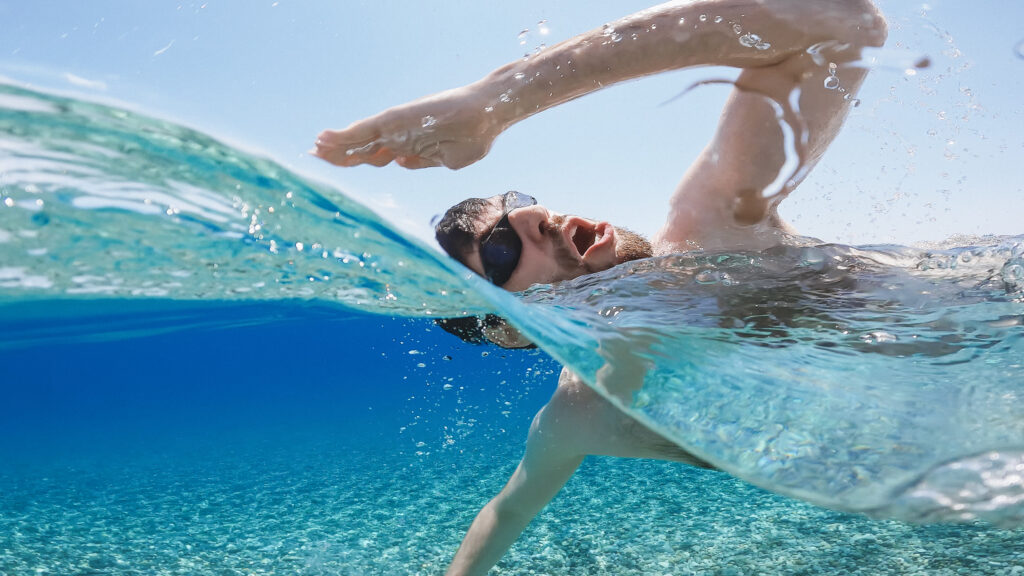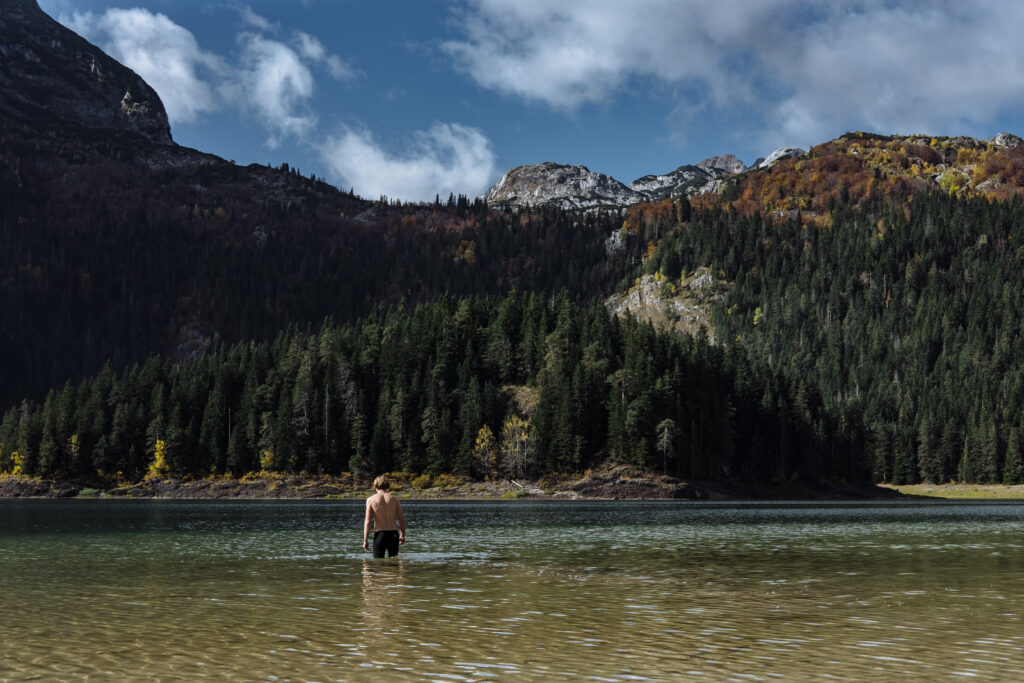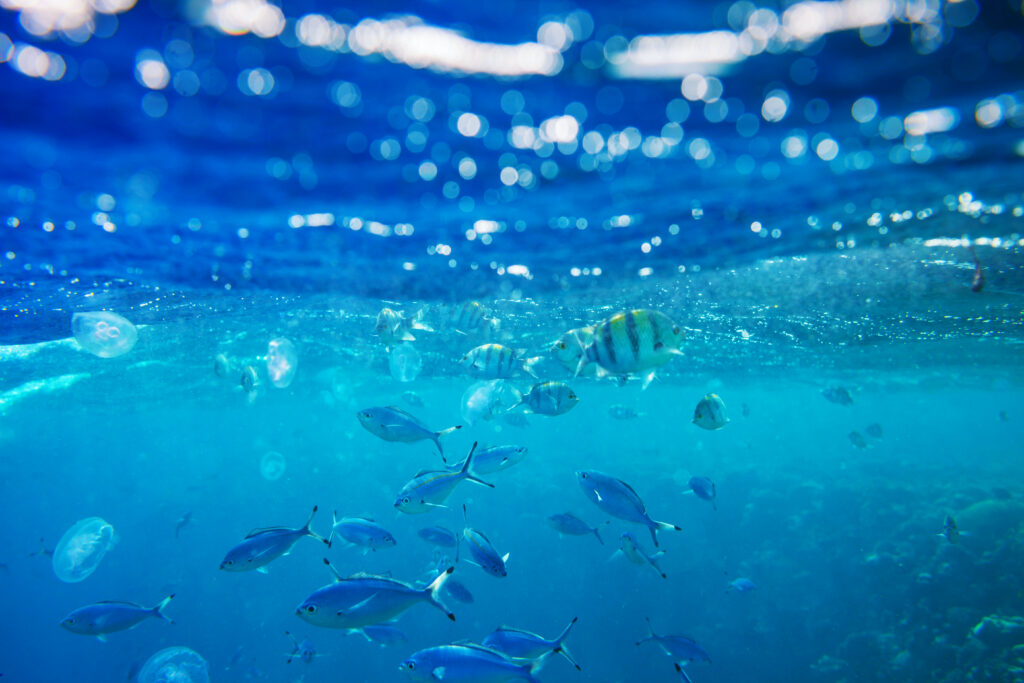
Open water swimming brings joy and solitude for most people. You feel a spiritual connection to nature, and there’s a certain rawness and beauty to it that you don’t find while indoors.
However, open water swimming can be intimidating if you’re not used to it. In this article, I’ll go over a few tips to help your swim be more enjoyable and bring awareness to certain factors you want to remain aware of.
Pool Swimming vs. Open Water Swimming
The number one difference is that the variables constantly change with open water. While a pool remains relatively the same daily, lakes, rivers, and oceans may differ each time you visit them. Water temperature, currents, water visibility, and wildlife are all factors to be aware of when swimming outside.
Also, if you get tired during an open water swim, you may not be in the immediate vicinity of something to hold onto. It’s important to remain acutely aware of yourself and be self-resilient during open water swimming!
What New Skills Are Needed For Open Water Swimming?
Sighting
In pool swimming, you have a black line to follow, so swimming straight isn’t always a concern. Swimming straight in open water is necessary, especially if you plan on racing in the future. Sighting is the art of glancing quickly at a landmark (buoy, boat, building, etc.) to make sure you’re still headed in that direction, all while swimming as normal.
Both of your arms actually pull water at slightly different rates. This variance will vear you off course quickly if you don’t sight often. It’s not a problem in the pool because you are subconsciously adjusting your stroke to stay on top of the black line.
To sight, add a small change to every third or fourth stroke by lifting your head up slightly (usually during your breathing stroke) to see in front of you and make sure you’re swimming straight. It’s a difficult and foreign move to get used to, as most swimmers tend to drop their feet as soon as they raise their heads. With practice, it will become easier. Professional triathletes practice sighting during their pool swims in order to become super efficient in open water.
Breathing on Both Sides
There are two reasons being able to breathe bi-laterally makes open water swimming more fun – large waves and the sun.
Waves tend to come from the left or right during swimming. You want to be able to breathe “away” from the incoming wave whenever possible. The sun also tends to be on one side of your body during your swim (and the opposite side when returning). Every time you take a breath, you may have the sun directly in your face, which isn’t fun.
I always practice breathing in the pool on the opposite side every third stroke to prepare for scenarios like this. It takes a while to master but definitely makes rough open water swim more enjoyable.
How to Pick an Open Water Swimming Location
Before you swim in an open water location, make sure you do a detailed check on conditions. Unlike a pool, open water conditions are highly variable and can change from hour to hour for the same spot.
Whenever you can, ask someone familiar with your swimming location if there is anything to be concerned about.
Pollution and/or Bacteria
Open water areas might appear clean, but some may still contain bacteria and pollutants that will cause waterborne illnesses. The Department of Natural Resources tests the water in state parks and national park beaches. The results are available online. Many local lakes organizations also do the same.
A few important tips to remember:
- Never swim with a wound that is bleeding or was recently bleeding, even a small one. All water contains bacteria, and even a small scratch can get infected quickly if you open the door to your bloodstream.
- You’ll ingest water during your swim. Hopefully, it will be only droplets, but it’s inevitable, so be aware of it.
Water Temperature
Cold water can “shock” your system soon after getting in. Your blood vessels can constrict rapidly, and in extreme cases, your natural reaction will be to expel the air in your lungs. In this case, you’ll want a wetsuit for sure. Be sure to swim slowly at first, letting your body get accustomed to the cold and focus on relaxing your breathing.
Conversely, warm water can actually cause you to overheat easier as well. Swim easier in these conditions and enjoy the environment.
Fun Fact: Cold water can impact the inner ear of some people. Upon completing your swim, you may find it difficult to stand up from a horizontal position since your balance is impacted. Ear plugs help while swimming, and even without them, your balance should return to normal in a few minutes.
Open Water Swimming in Salt Water vs Fresh Water
Salt water is more buoyant than fresh water, but that buoyancy comes at a price. You will naturally become more dehydrated while swimming in it. You’ll know this is the case when you have a temporary sore throat after a one-hour swim in salt water. The small amounts of salt water being ingested are tough on your body, so be prepared and rehydrate appropriately upon finishing your swim.
Water Clarity
Let’s be honest, when you can’t see very far in a large body of water, it’s a bit spooky. I mean, what’s down there? Low visibility can make swimming more challenging, as depth perception and even forward progress are hidden from view.
Tides, Currents, and Waves
While tides are easy to predict, currents can exist unseen and be surprising.
- Rip currents account for 80% of beach rescues and are easy to misjudge. Many ocean swimmers choose to swim parallel to the shore and can get caught in a rip current without ever knowing it. Make sure you know the signs and how to get out of a rip current if this happens to you.
- Winds tend to create waves, especially in large lakes. These waves tend to know exactly when you’re turning to breathe and will always decide to hit you right at that moment. Learning to anticipate the cresting of the wave is helpful, but learning to breathe on both sides is the real answer. Breathe on the opposite side of the incoming wave, and you’ll avoid getting battered in the face.
- Waves can also cause issues with sighting, as buoys and landmarks can become impossible to see in large waves. Staying closer to shore and picking tall landmarks to sight helps, so plan accordingly.
Wildlife
Be aware of what animals exist in your swimming spot. Generally, all animals will ignore you if you leave them alone, so use common sense.
Remember, the beautiful creatures out there are more numerous than the big scary ones.
Fun fact: Hippos can swim up to 5 mph. Michael Phelp’s fastest speed in a race is 4.7 mph.
You’ve got an open water swimming spot picked out; now what?
Always Have a Plan
- You’ll be swimming with a buddy, but make sure you tell a non-swimmer where you’re going, just for the safety aspect of it.
- Plan out your swim before getting in the water, and make sure you and your buddy are in agreement with the plan.
- Stay with your swim buddy. It doesn’t do any good if you both aren’t reasonably close together. Practice drafting off each other. Make it a game.
- To help with sighting, pick a tall landmark. Perhaps a tree or building. Every two or three breaths, glance up to see if you are on course. Give yourself a point for every time you stay on course.
- Watch out for boat traffic and stay out of boating lanes. Use your swim buoy and wear a bright swim cap. You want to be a beacon of color so you’re easily seen by others.
If You Get Into Trouble
If you’re struggling, don’t be afraid to ask for help. Do your best to remain calm and take action to move to shallow water if possible. Float on your back or breaststroke to catch your breath. Staying calm is the focus.
Conclusion
Swimming in open water is one of the greatest joys of outdoor recreation. Whether you imagine yourself to be a professional lifeguard, a triathlete trying to qualify for the Kona Ironman, or even a Navy Seal, you’re taking the first step to getting there.
With these tips in mind, you’ll be ready to take on open water swimming like a pro! If you have any questions, please feel free to reach out.
Author: David Garthe races triathlons and many other adventure races. Find his race schedule and your next race at www.irace.ai
Want more open water swimming tips? Check out our guide to 5 Open Water Swimming Essentials here.




